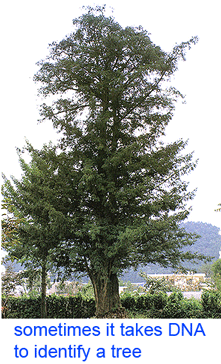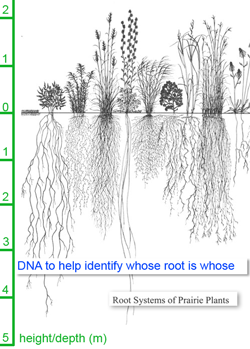 In 26 November 2008 Mol Ecol researchers from University of British Columbia report on a meeting of 1200 plant specialists, entitled “Botany without Borders”, held on the campus in July 2008, which brought together the annual meetings of Botanical Society of America, the Canadian Botanical Association/L’Association Botanique du Canada, American Fern Society, and American Society of Plant Taxonomists. According to authors Kane and Cronk, DNA barcoding was a recurring theme of presentations and posters.
In 26 November 2008 Mol Ecol researchers from University of British Columbia report on a meeting of 1200 plant specialists, entitled “Botany without Borders”, held on the campus in July 2008, which brought together the annual meetings of Botanical Society of America, the Canadian Botanical Association/L’Association Botanique du Canada, American Fern Society, and American Society of Plant Taxonomists. According to authors Kane and Cronk, DNA barcoding was a recurring theme of presentations and posters.
Plants continue to challenge a standardized approach to species identification using short DNA sequences from a uniform location on the genome, aka DNA barcoding. Genetic divergences among lineages make it difficult to design broad-range primers that amplify a desired target region across the diversity of plants and, at the same time, sequence differences among closely-related plant species are generally an order of magnitude fewer than those among animals, with the result that short sequences are often inadequate to assign specimens to species. Looking beyond these difficulties, the potential societal and scientific value of a standardized genetic identification method for plants is enormous. For one example cited in the meeting report, wild nutmeg trees of the genus Compsoneura can be identified by examining the tiny flowers on male trees, but trees are usually not in flower and female trees always lack these distinguishing characters. (It is remarkable that something as large as a tree can sometimes not be identified even by specialists!) In one study (Newmaster, Mol Ecol Notes 2007), a DNA barcoding approach using 2 short plastid sequences enabled identification of 94.7% of samples to species, compared to 40% using field characters. A standardized DNA-based approach should be a big boost to soil science by enabling the underground parts of plants, ie roots, to be readily named (Ridgway, BMC Ecol 2003).
 The authors conclude “DNA barcoding in plants is clearly here to stay and there is consequently an urgent need to rise to the scientific challenges it presents.” Some of those scientific challenges are explored in November 2008 Taxon by researchers from National Museum of Natural History, Washington, D.C., and National Center for Biotechnology Information, Bethesda, Maryland. Erickson and colleagues lay out a set of standard approaches to quantifying DNA barcoding success in plants.
The authors conclude “DNA barcoding in plants is clearly here to stay and there is consequently an urgent need to rise to the scientific challenges it presents.” Some of those scientific challenges are explored in November 2008 Taxon by researchers from National Museum of Natural History, Washington, D.C., and National Center for Biotechnology Information, Bethesda, Maryland. Erickson and colleagues lay out a set of standard approaches to quantifying DNA barcoding success in plants.
The authors state “PCR amplification must be the primary criterion for selecting a DNA barcode,” i.e. the chosen region should have the best rate of successful amplification across the diversity of plants. They suggest 90% or greater rate of recovery as a guideline. Second, they suggest each or any additional markers should improve PCR success by reducing the number of non-recovered PCRs by 50% and improve identification by at least 10%, using a parameter they call “probability of correct identification (PCI),” which is defined pretty much as it sounds. Applying this statistic to existing plant studies indicates the best results are with 2 plastid barcodes in which case PCI approaches an average of 90%, which of course includes much lower rates among some groups. Nonetheless, in local flora successful identification to species level may often approach 100%, because closely-related congeneric species are not present. The effort to establish a standardized genetic library of DNA barcodes for world’s plants is moving ahead.